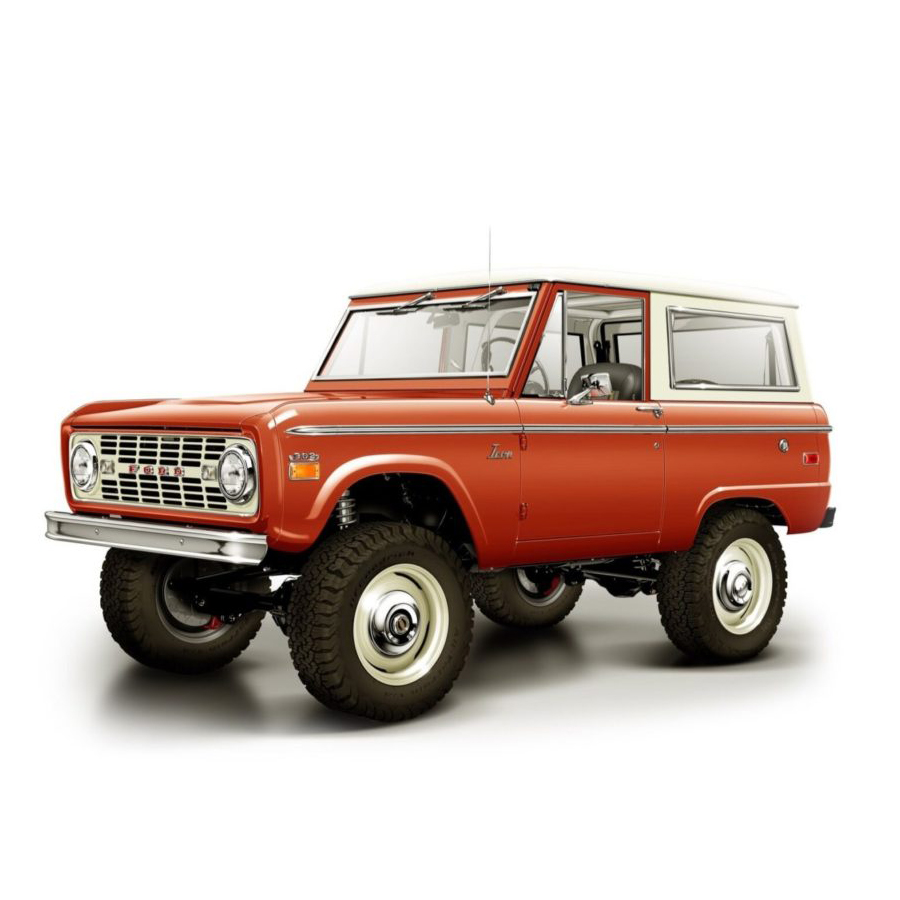The 2021 Ford Bronco Exists at The Intersection of Heritage + Insight
The brand’s de facto “chief product officer” speaks about the creation of the riveting new family

The iconic Ford Bronco is back after a 25-year hiatus. Available in 2021 as a two-door, four-door or a smaller Sport model, the Bronco badge now represents customization and innovation as much as capability. Design and engineering teams shook up their typical creative and development process and the results are stunning.
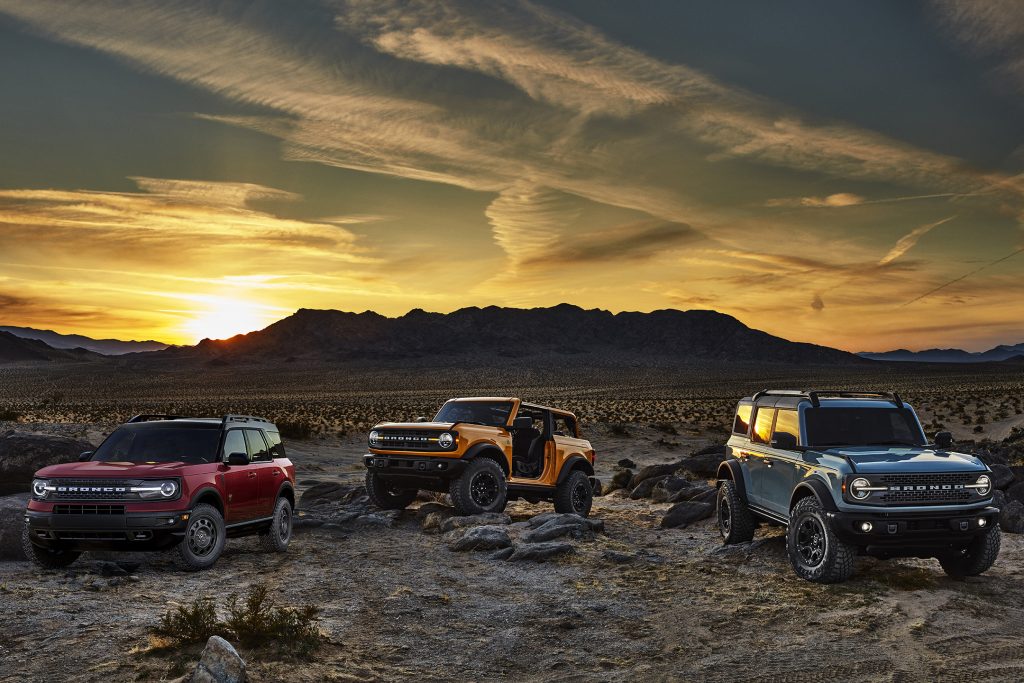
Ford has done its research and created a Bronco for all types of drivers, from the simple base model to the fully kitted-out off-road machine with all of the performance and tech to satisfy the most hardcore. There are seven iterations of the two-door (starting at $29,995) and first-ever four-door model (starting at $34,695) and five versions of the new smaller Sport model (starting at $28,155). The sixth generation 4×4 family also includes four Off-Roadeo “off-roading and outdoor adventure playgrounds” in the US and Bronco Nation, a new online destination for fans and owners.
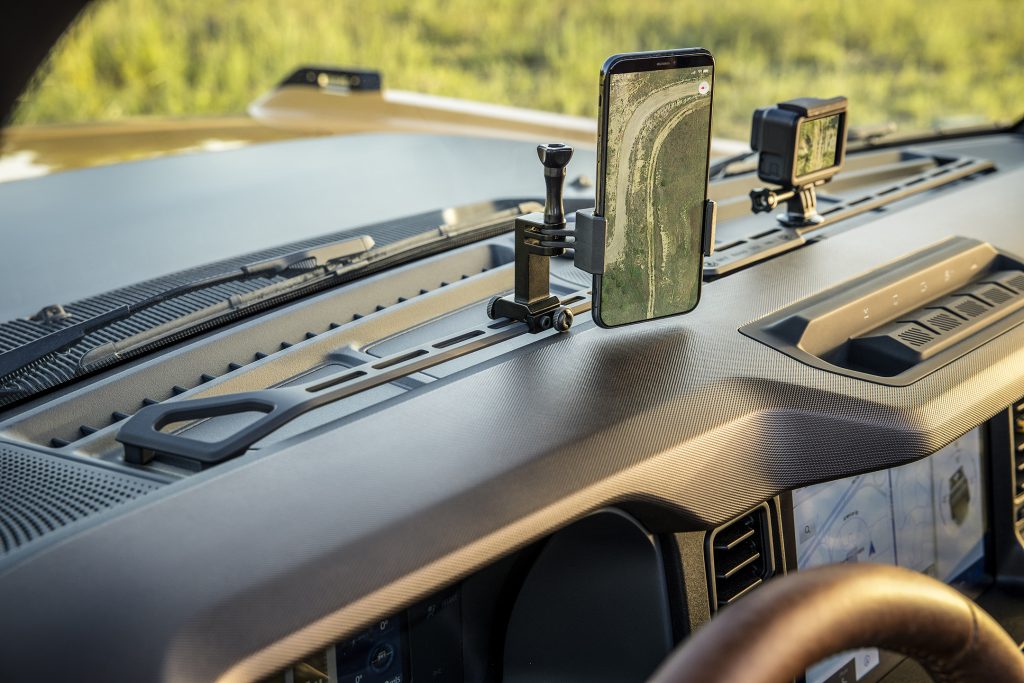
Various options, packages, drivetrains, plus clever storage solutions (including the tech rack on the dashboard to hold your GoPro and phone, zipped pockets behind the seats to stash your tablet and trail guides, and under-seat storage) and sleek brand accents balance sport and utility. One of the biggest auto launches in what feels like forever, there’s no shortage of coverage on the Bronco, so we decided to focus on how Ford developed the new family strategy.
Few people outside of the industry likely know the name Jim Baumbick, but he’s essentially Ford’s chief product officer (though his official title is VP Enterprise Product Line Management) and he leads the multidisciplinary teams that decide what products the company should make over the next five, 10 and even 20 years. For a product/brand relaunch as big as Bronco, we wanted to understand how the company went about bringing the bucking horse back in a big way, so we spoke with Baumbick to understand how the company develops its products.
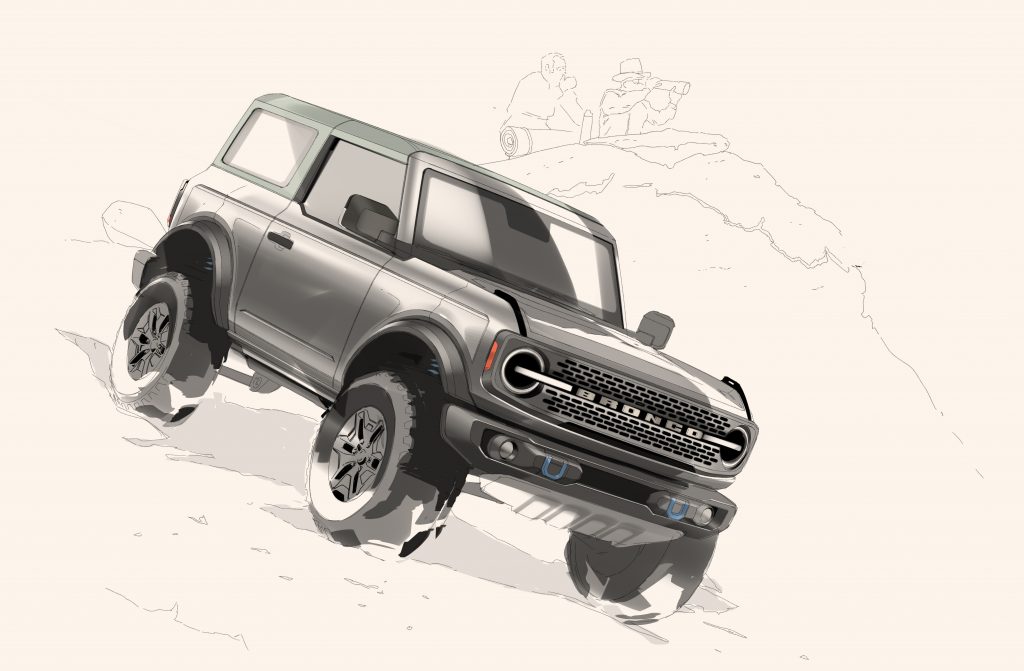
The way we think about a product launch is like a clock. If you start planning at 12:01 and the car is launched at 9:00, creative teams typically focus on the 3PM to 6PM zone, where designers and engineers can attest to references and provide first reactions to briefs. But we want to know how you got to 3:00. How do you get to that brief? How did you decide to begin this process of defining what a product is, should, and can be?
The Bronco, in its original form, set the table or effectively created the segment. Over the last couple of years in particular, we’ve been decidedly making sure that we’re playing to our strengths and putting together a strategy that is truly built to win. Bronco has been one of those vehicles that I think is certainly a labor of love for many in the company. There have been attempts to try to make it work in a viable way. We always knew the desirability was there, but [it had to be made] in a viable and feasible way.

When in that early portfolio stage, one of the things we’re really focused on is where do we have pillars of strength, how can we uniquely stand out in a crowded marketplace and do things in a way that only Ford could—because that gives you a very clear perspective, a clear point of differentiation. Then, 200% of our focus is “How do we actually identify durable ways in which to have an advantage and make sure that we’re underpinning and building up what the brand stands for?”

Certainly, anything we do has to have a deep degree of authenticity, and you see that when you look at the F Series truck or the Mustang or the Explorer. Those exude that, even in a commercial space. Each has a very clear DNA and a definitive “What does it stand for?” and “What does it not stand for?” And they have an emotional resonance with their customers, which is probably the most important thing. How do you emotionally connect with customers in a way that incites passion? We believe—with all of the build-up, in all the energy that’s been bounced around on Bronco—Bronco plays that role. There’s an authenticity and a heritage in Bronco that we think could be another powerful anchor nameplate within the portfolio.
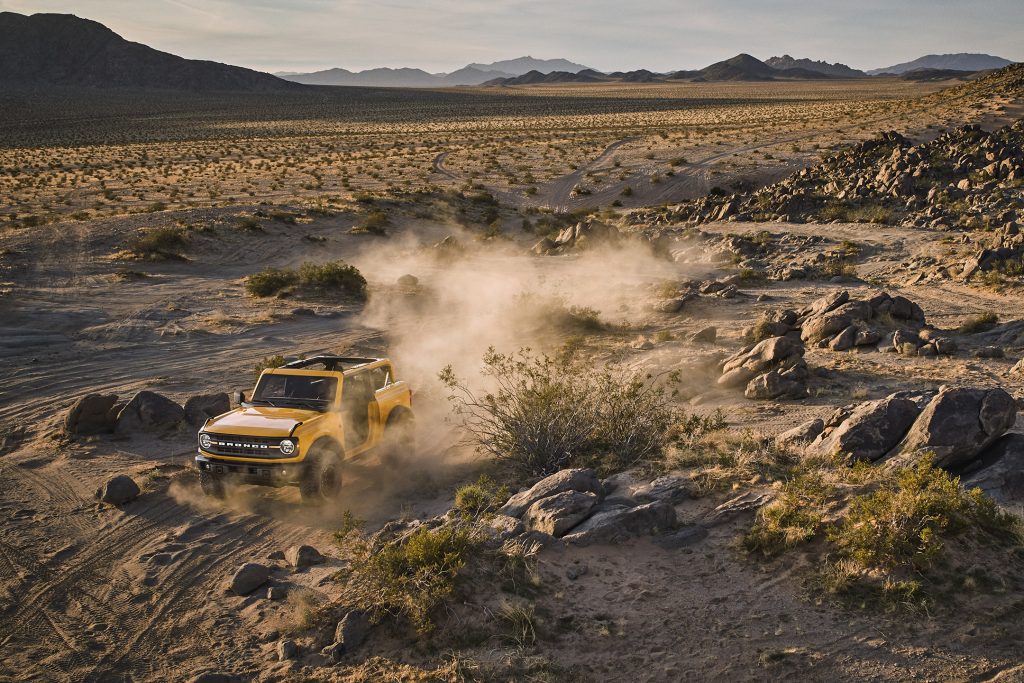
You could have had the same desire to create this family and decided on a new name. Why was the existing name the better choice?
Bronco in the past has been described as a mash-up between a tough truck and a Mustang. It’s always been known for high-speed fun, sports or off-road utility. When you think of its authenticity, its strength and its heritage, why would you not? It means something to a lot of people who have taken cars and handed them down from generation to generation. We were out of the market with Bronco and the value of vintage Broncos has just escalated over time. What that’s signaling very clearly is that there is a deep rooted passion for these products and it’s just not another utility vehicle.

There was a 25 year break when there were no Bronco products, but was it always there as something you considered bringing back? Was it something that was thought about over time but only to be executed when there comes a clear moment?
There’s been a pent-up demand because we think it’s such a strong nameplate and there’s such an opportunity for us to resurrect it in the form you’re seeing. A lot of things have to happen for it go right. A big part of my team’s role in the early strategy domain—and even in the pre-program, the early specific product definition—is to be focused on making sure we get it just right. And we’ve been able to leverage the evolution of the viability of the space, but that’s never been a question. When you look at market trends over time, the growth in rugged outdoor type of imagery has grown dramatically. It’s nearly doubled in the last 10 years. We think there’s this really strong return to nature by a lot of the buying public: getting back to nature, finding balance. All of these things—learning about how to better themselves and get different experiences—learning how to drive in various off-road conditions, for example. We think this [Bronco] has a ton of legs and a lot of ways in which it can actually evolve over time.
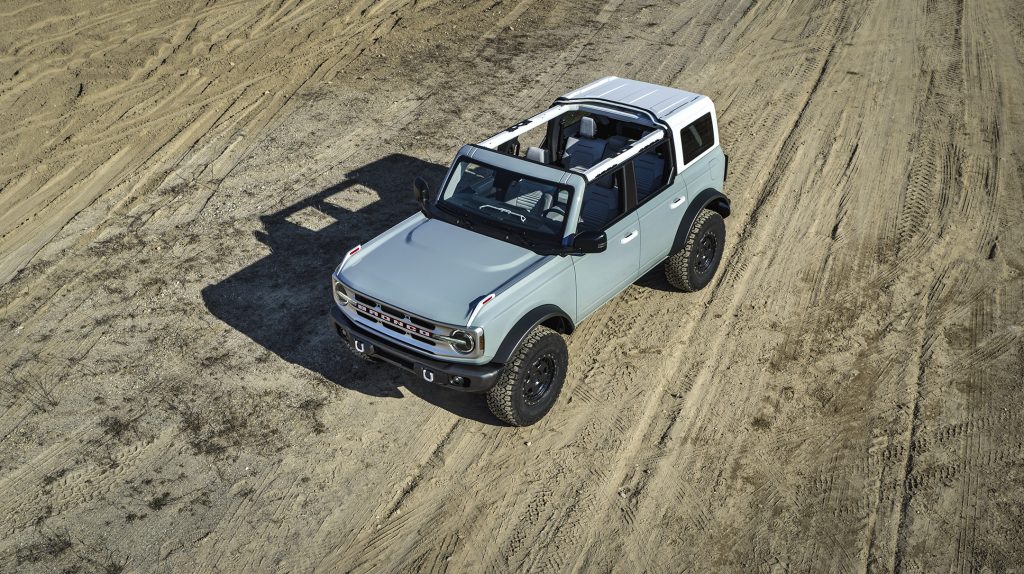
Roughly, briefs are given and then cars come out five years later. Are you working within a five-year cycle or are you ahead of that?
This has not been a five-year expedition, no. Maybe that applies exactly to Bronco, but in the strategy space we’re looking at the portfolio. We’re looking at a wide range of possibilities: how do we want the portfolio to evolve over time? How are the segments evolving? What are our customers’ tastes? How are they evolving?
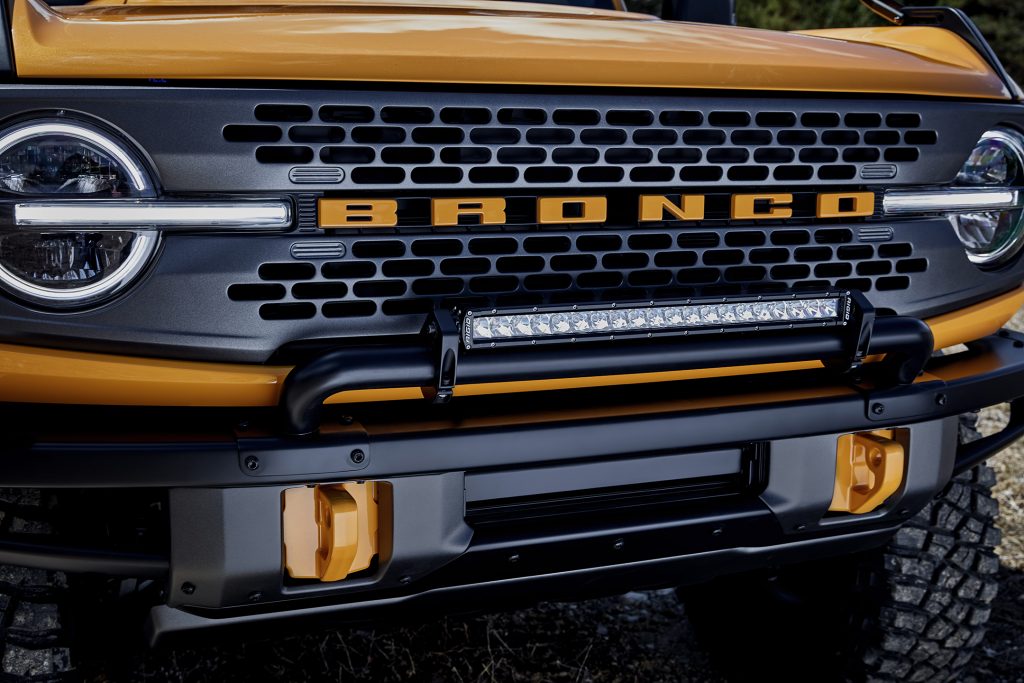
How long is that purview then? Five years? 10 years? How do you decide what to focus on within that timeframe?
The far time horizon, for me, would be 2025 and 2030. In some cases, we’re even out beyond that. We’re looking out into the future at the things that are going to become very relevant over time. At the same time, we’re thinking about what’s happening today. There are areas that we are at concept level exploring and we’re talking to customers, bouncing ideas off them. This has really been something we’ve amped up tremendously over the past couple of years. We’re identifying what’s going to matter most to these customers and, in some cases, what’s going to matter least. Understanding those two bookends really informs us.

But then you just watch customers and you see what those pain-points are and think about how you can make it better. You really spend time and look for those opportunities: how do you make the vehicle more social? How do you make sure everybody in the vehicle has the best seat in the house? There are things within the strategy space we are working to identify, those passionate signals—things that are going to matter most to customers. Our whole process in these early phases (leveraging design thinking and human-centered design) is trying to find the signal, amplifying the signal, and turning that into a durable point of differentiation.
And it’s probably a bad reference, but I think of it as a giant Shark Tank, and these teams have to find the next best use of funds. At some point there is a limit, but the best ideas win.
Images courtesy of Ford

